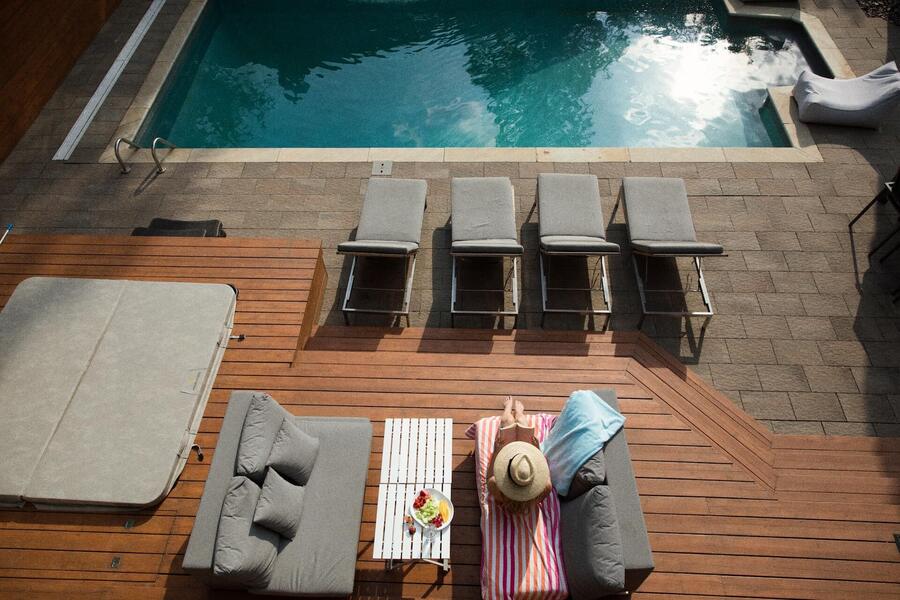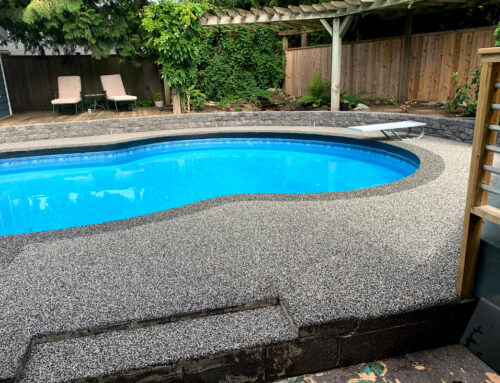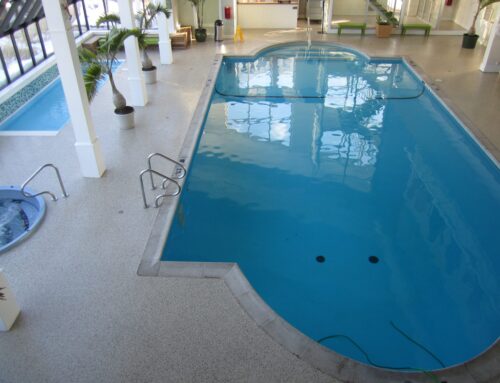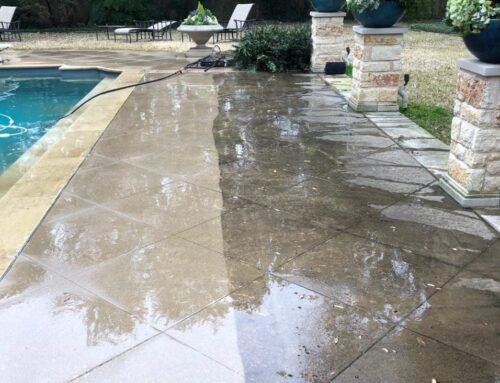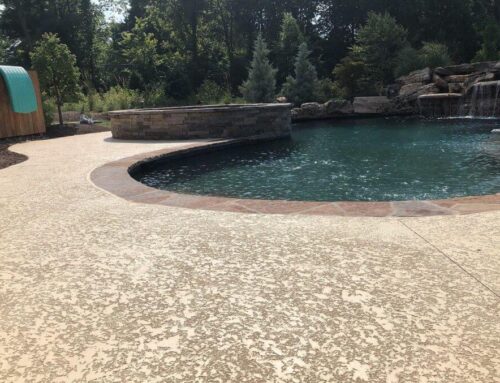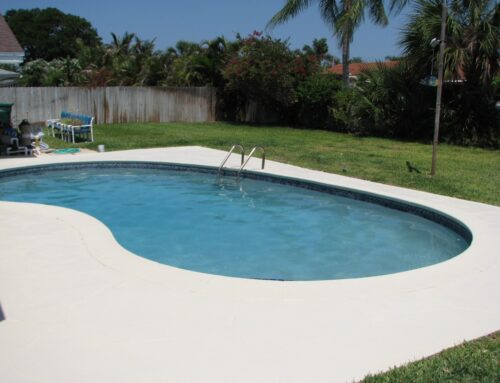A pool deck is an essential part of any outdoor pool area, providing a comfortable and safe space for lounging, entertaining, and enjoying the sun. Over time, pool decks can become worn out, cracked, or faded due to constant exposure to the elements and heavy foot traffic.
Resurfacing your pool deck is a cost-effective way to breathe new life into your outdoor space. However, with numerous pool deck resurfacing materials available in the market, choosing the right one for your needs can be overwhelming. In this blog post, we’ll guide you through the selection process and help you make an informed decision.
Assess Your Needs and Budget
Before diving into the world of pool deck resurfacing materials, it’s crucial to evaluate your specific needs and budget. Consider the following factors:
Durability: Determine the level of durability required based on the expected foot traffic and weather conditions in your area. If you have a high-traffic pool area or live in an area with extreme temperature variations, opt for a material that can withstand these challenges.
Aesthetics: Consider the overall style and design of your outdoor space. Choose a pool deck resurfacing material that complements the existing landscape, architectural elements, and the overall ambiance you want to create.
Maintenance: Think about the amount of time and effort you’re willing to invest in maintaining your pool deck. Some materials require regular sealing, staining, or cleaning, while others are relatively low-maintenance.
Budget: Set a realistic budget for your pool deck resurfacing project. Different materials come with varying price points, so it’s important to choose an option that aligns with your financial constraints.
Explore Different Pool Deck Resurfacing Materials:
Now that you’ve assessed your needs and budget, let’s explore some popular pool deck resurfacing materials and their key characteristics:
Concrete Overlay: Concrete overlays are a popular choice for pool deck resurfacing due to their versatility and affordability. They involve applying a thin layer of concrete over the existing surface. Concrete overlays can be customized with various colors, textures, and patterns to achieve the desired look. They are durable, slip-resistant, and can withstand heavy foot traffic. However, they may require periodic resealing to maintain their appearance.
Pavers: Pavers are individual units made from concrete, stone, or brick that interlock to create a visually appealing pool deck surface. They offer excellent durability, come in a wide range of colors and patterns, and can be easily replaced if damaged. Pavers provide good slip resistance and allow for easy water drainage. However, they can be more expensive compared to other materials and may require occasional maintenance, such as re-leveling or replacing joint sand.
Natural Stone: Natural stone, such as travertine, limestone, or slate, provides a luxurious and timeless look to any pool deck. These materials are known for their durability, heat resistance, and slip resistance when properly sealed. Natural stone offers a wide range of colors, textures, and patterns to choose from, allowing you to create a unique and elegant pool deck. However, natural stone can be more expensive than other materials, and its installation may require professional expertise.
Wood Composite: Wood composite materials, such as composite decking or modified woods, offers the appearance of real wood without the associated maintenance issues. They are resistant to rot, splintering, and fading, making them suitable for pool decks. Wood composite materials require minimal upkeep and are available in various colors and textures. However, they may be prone to heat retention, and the initial cost can be higher compared to some other materials.
Rubber: Rubber pool deck resurfacing is a practical choice for those seeking comfort and safety. Rubber materials provide excellent shock absorption, slip resistance, and insulation properties. They are comfortable to walk on and can help prevent injuries from falls. Rubber resurfacing is available in a variety of colors and textures, allowing for customization. However, the rubber may fade over time and require occasional cleaning to maintain its appearance.
Consider Climate and Location
The climate and location of your pool deck play a significant role in determining the suitability of different resurfacing materials. Consider the following climate-related factors:
Heat Resistance: If you live in a region with hot summers, it’s essential to choose a pool deck resurfacing material that remains comfortable underfoot and does not absorb excessive heat. Materials like natural stone, concrete overlays with lighter colors, or rubber can be good options for heat resistance.
Freeze-Thaw Cycle: In areas where freezing temperatures are common, selecting a material that can withstand the freeze-thaw cycle without cracking or damage is crucial. Pavers, concrete overlays with proper expansion joints, and natural stone are generally more resistant to freeze-thaw conditions.
Saltwater or Chlorine Exposure: If your pool uses saltwater or requires frequent chlorine treatments, ensure that the chosen pool deck resurfacing material is resistant to chemical exposure. Some materials, like pavers and concrete overlays, are highly durable and resistant to chemical damage.
Seek Professional Advice and Samples
Choosing the right pool deck resurfacing material can be challenging, especially if you’re unfamiliar with the options available. Consider consulting with a professional contractor or pool deck specialist who can provide expert advice based on your specific needs and budget. They can also provide material samples, allowing you to visualize how each material will look in your outdoor space.
Selecting the right pool deck resurfacing material is crucial in transforming your outdoor pool area. By assessing your needs, exploring different materials, considering climate and location factors, and seeking professional advice, you can make an informed decision that meets your aesthetic preferences, budgetary constraints, and durability requirements.
Remember, investing in the right pool deck resurfacing material will enhance the visual appeal of your pool area and ensure its longevity and enjoyment for years to come.
Key Takeaways:
Assess your needs and budget by considering factors such as durability, aesthetics, maintenance, and budget constraints.
Explore different pool deck resurfacing materials, including concrete overlays, pavers, natural stone, wood composites, and rubber, to find the one that suits your preferences and requirements.
Consider the climate and location of your pool deck, considering factors like heat resistance, freeze-thaw cycle, and exposure to saltwater or chlorine.
Seek professional advice and samples from contractors or pool deck specialists to make an informed decision.
Choosing the right pool deck resurfacing material can enhance your pool area’s visual appeal, durability, and safety, ensuring long-term enjoyment.

